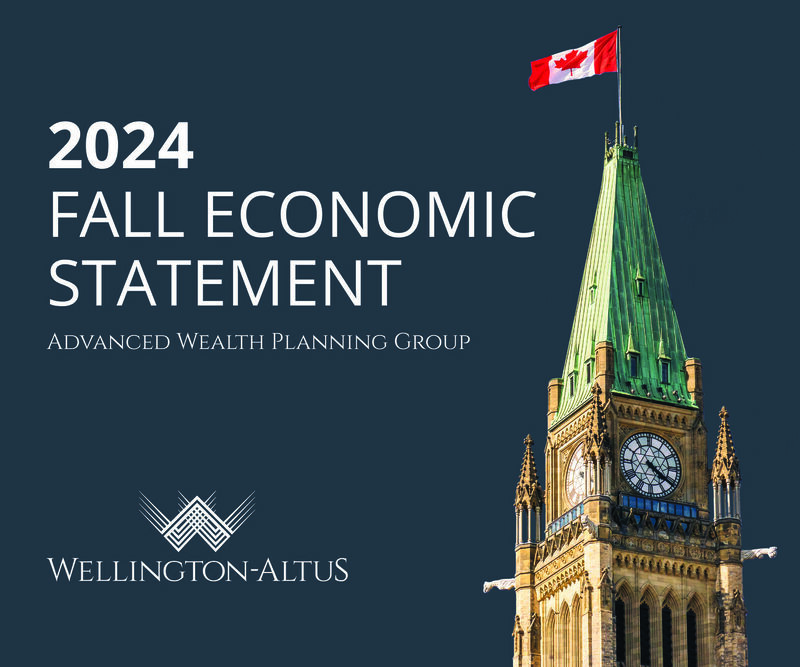Gold Seal Monthly Review
T’was the night before rate cuts, and all through the street,
The markets were hoping for Powell’s retreat.
Bonds were hung by portfolios with care,
In hopes that soft landings soon would be there.
Investors were nestled, snug with their gains,
While Nvidia’s profits soared up like planes.
Macklem in Ottawa, and Powell down south,
Debated rate trims with bated breath and mouth.
When out on the newswire there arose such a clatter,
I sprang from my desk to see what was the matter.
To the Bloomberg I flew like a flash,
Pulled up the charts and prepped for a crash.
The screen glowed bright, with AI stocks aglow,
But tariffs from Trump added ice to the snow.
Canada’s trade routes began to feel tight,
As auto costs climbed further into the night.
Trudeau paced nervously, facing defeat,
While Mexico gained on North American streets.
“Higher for longer,” whispered no more,
Rate cuts had landed on Canada’s shore.
Yet growth felt thin, though markets climbed high,
Disconnected from GDP under the sky.
Serenity Portfolios beamed with delight,
But global headwinds stayed firmly in sight.
With TFSA season about to unfold,
We rebalanced early, steady and bold.
As I closed up my laptop, feeling quite bright,
Happy holidays to all, and to all a good night!
Canada’s Economy: Storm Clouds, Trade Winds, and a Long Road Ahead
As we head into 2025, Canada’s economic outlook feels like we’re standing in the driveway with a snow shovel, wondering how deep the storm will get before it finally lets up. While artificial intelligence (AI) driven rallies and bond market stability have been bright spots globally, Canada’s path feels weighed down by trade tensions, political uncertainty, and the reality that our economy isn’t riding the same tech wave as the U.S. The Bank of Canada’s rate cuts have thrown a lifeline to debt-heavy households, but that relief may not be enough to offset what’s brewing beyond our borders. For investors, this isn’t just a long winter—it’s shaping up to be a year to bunker down and prepare for some rough trade winds.
Much of 2024’s market momentum came from the AI surge led by Nvidia, Microsoft, and the rest of the Magnificent Seven. But for Canada, this tech renaissance feels like something happening across the lake while we’re still trying to start the snowblower. Our market, anchored in energy, resources, and manufacturing, isn’t seeing the same meteoric lift. While these sectors provide stability, they aren’t the kind of high-growth engines propelling U.S. indices forward. For Canadian portfolios, it’s been a year of leaning into bonds, commodities, and defensive plays—steady, but not spectacular.
Now, with President-elect Donald Trump returning to the White House and dusting off the tariff playbook, Canada’s vulnerabilities are moving to center stage. Trump’s announcement of tariffs on Canada and Mexico—America’s closest trading partners—underscores how trade has become his go-to hammer for achieving broader geopolitical goals. Unlike the strategy with China, where the goal is to permanently reroute industrial capacity, Trump’s North American tariffs aren’t about manufacturing—they’re about leverage. Immigration, border security, and fentanyl trafficking are now trade issues. And when trade negotiations start to look more like national security briefings, Canada’s position becomes far more complicated.
The auto sector is one of the most vulnerable to Trump’s proposed tariffs, with vehicle parts crossing North American borders multiple times during production. Each crossing could drive up costs significantly, potentially adding thousands to the final price of a vehicle. While exact figures vary, analysts agree the cumulative effect could disrupt supply chains, increase inflation, and force manufacturers to reconsider production locations. This presents a real challenge for Canada’s manufacturing base, particularly in Ontario, where the auto sector plays a major role. For Canada, this could lead to shrinking production capacity or worse—relocation to the U.S. or Mexico. Either way, jobs and growth take the hit.
At the same time, political uncertainty at home isn’t helping. Prime Minister Justin Trudeau’s government, already operating as a minority, faces mounting pressure as rumors of his potential resignation grow louder. With an election looming, Trudeau’s potential exit leaves Canada without a clear voice at the negotiating table during what could be one of the most critical economic standoffs in recent memory. Capitulating to Trump’s demands could alienate Trudeau’s base, while pushing back too hard risks retaliatory tariffs that could slam Canadian exports. Either scenario carries economic risks that could stall growth at a time when Canada can’t afford it.
Mexico, by comparison, may be better positioned to weather Trump’s demands. President Claudia Sheinbaum’s government has proven adept at negotiation, and Mexico’s importance to U.S. supply chains makes it harder to sideline. In fact, Trump’s tariffs may even strengthen U.S.-Mexico ties at Canada’s expense, further entrenching Mexico as the preferred North American manufacturing partner. For Canada, this introduces the risk of being left out of regional trade agreements that were designed to safeguard our interests. The “three amigos” could quickly become two—and Canada risks being the odd one out.
Meanwhile, the Bank of Canada has been doing its part to soften the blow at home. Rate cuts in response to cooling inflation have provided some relief to heavily indebted households and businesses, offering much-needed breathing room. But rate cuts won’t fix supply chain disruptions or repair strained trade relations. They’re helpful for managing debt and supporting domestic spending, but they won’t stop factories from scaling back or exporters from facing higher tariffs. It’s a band-aid, not a cure.
Even so, 2024 hasn’t been entirely bleak. Bond markets have performed well, providing a rare bright spot in portfolios. For investors looking for stability, fixed income became more than just a defensive play—it became one of the best-performing asset classes on a risk-adjusted basis. But bonds alone won’t drive growth. Without meaningful exposure to high-growth sectors like tech, Canadian portfolios will continue to lag behind global markets. Investors who diversified internationally this year fared far better than those who kept their focus close to home.
At Gold Seal Financial Group, our Serenity Portfolios have thrived in this environment, delivering strong growth for clients. By emphasizing diversification across sectors and regions, we’ve positioned portfolios to capitalize on the AI boom and global bond market resurgence. However, it’s important to acknowledge that this growth is somewhat disconnected from the broader global economy. While Serenity Portfolios have performed well, much of that performance has been driven by specific market segments, namely large-cap tech and AI sectors. This divergence serves as both a reminder of the importance of diversification and a signal that we can’t assume this growth will extend indefinitely.
As we look toward 2025, Gold Seal will be rebalancing portfolios in early January following Tax-Free Savings Account (TFSA) contributions to ensure clients are positioned to weather the uncertainties of the year ahead. While Serenity Portfolios continue to perform well, we remain cautious about overexposure to sectors that may experience volatility as global trade tensions increase. A balanced, globally diversified approach remains critical to long-term stability.
Canada isn’t facing collapse, but the challenges ahead aren’t small. Trade tensions, political turnover, and slower growth paint a picture of a longer, colder winter for the Canadian economy. But for investors willing to stay patient, diversify, and keep an eye on global opportunities, there’s light on the horizon. The thaw may take longer this time, but like every Canadian winter—it eventually ends.
2024 Fall Economic Statement

Following a tumultuous day at Parliament Hill, the 2024 Fall Economic Statement is finally here. The Advanced Wealth Planning team breaks down the highlights: read the full report here.


